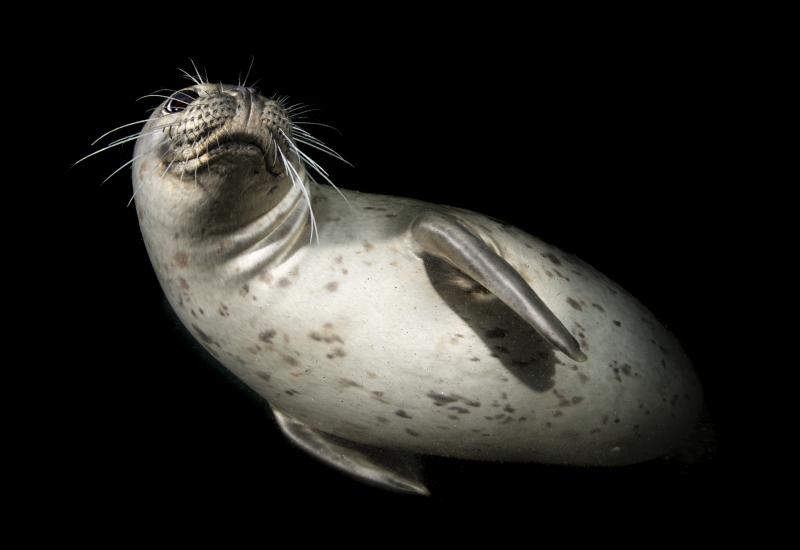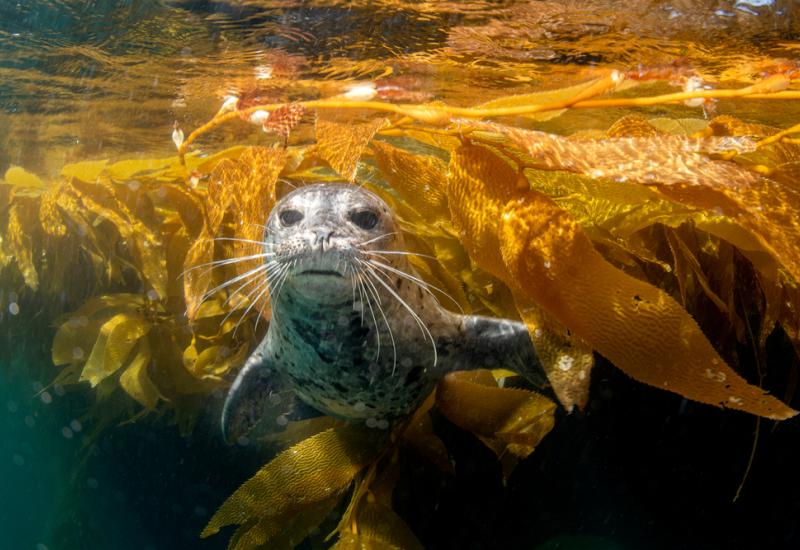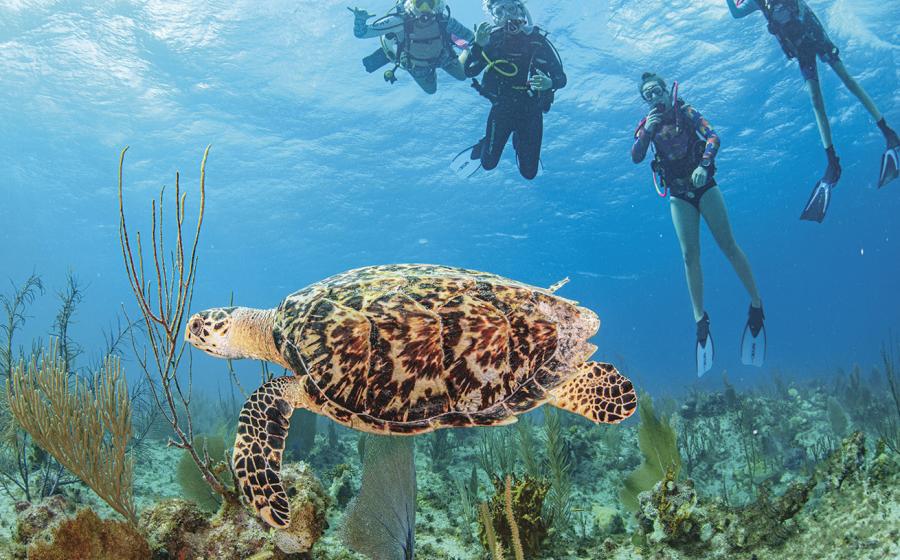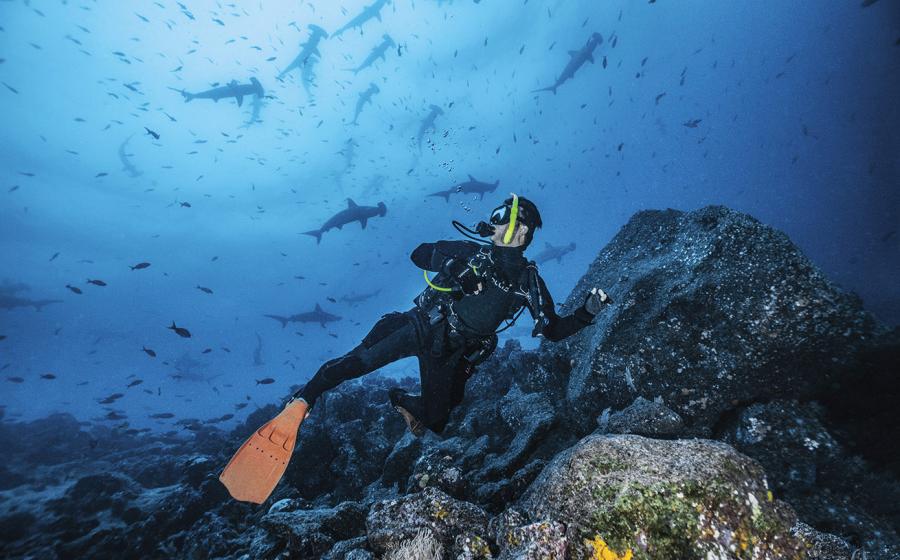6 United States National Parks Prime for Scuba Diving
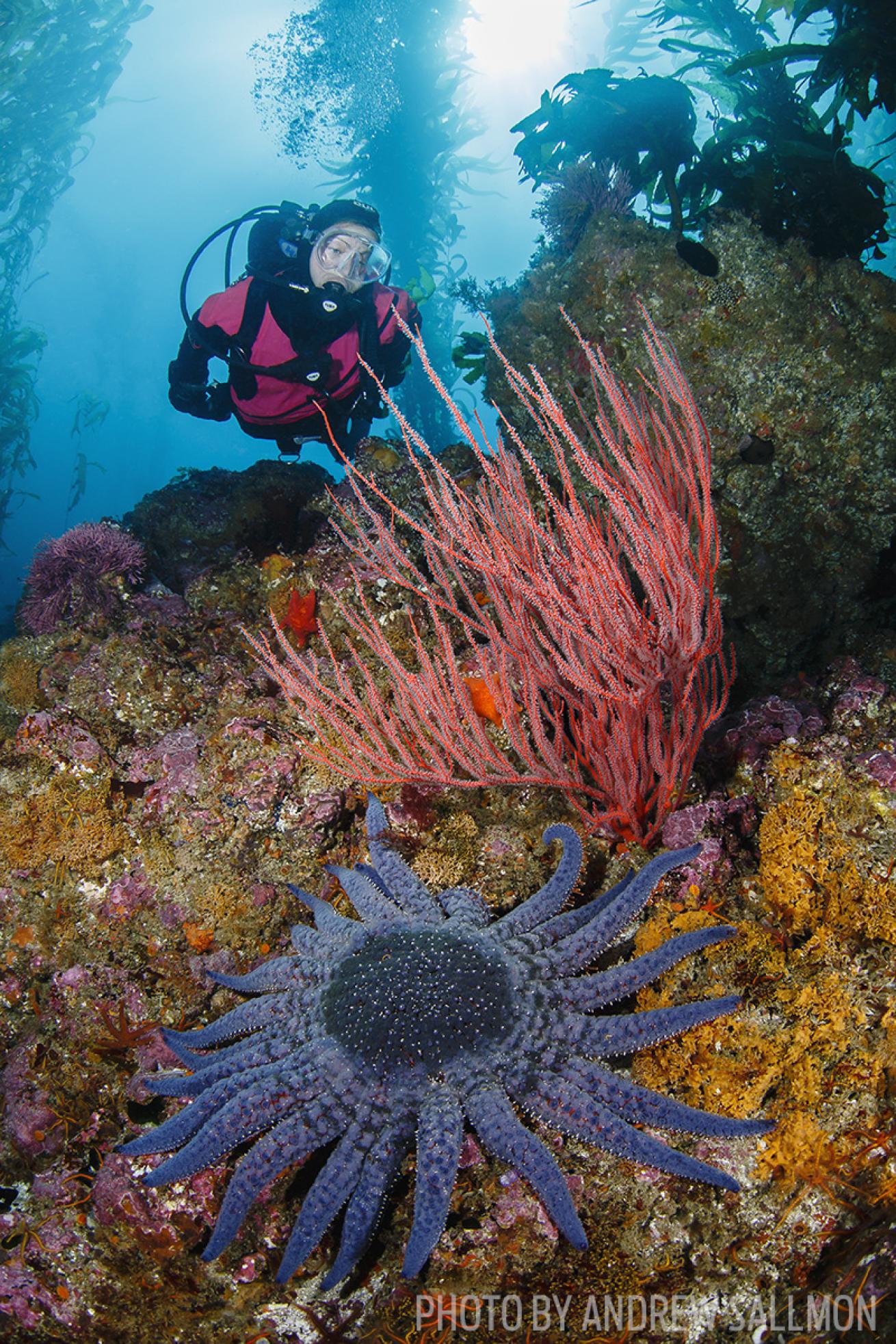
Andrew SallmonTake a patriotic plunge at these top-notch National Park dive spots, like Channel Islands National Park
When President Woodrow Wilson established the National Parks Service 100 years ago, there were only 14 sites to enjoy. Now, as the NPS celebrates its centennial, there are 59 national parks, 34 of which have diving. Pack your gear bag and celebrate 100 years of national parks the way only divers can.
Channel Islands National Park Southern California
“It has this amber color that as the sun streaks through, it just lights up the whole environment down there,” says public information officer Yvonne Menard of the kelp forests that are abundant around the Channel Islands. These Southern California waters get a mix of warm and cool currents, bringing a trove of species from each environment, including sea lions, spiny lobsters, gray whales, dolphins and occasionally 600-pound sea bass that aren’t afraid of divers. Paired with coral-studded arches off Anacapa Island, the sights never end. Says park dive operator Kelly Moore, “There are so many unknowns, you never know what you’re going to see.”
> Average Viz: 30 to 100 feet
> Average Temp: 50 to 70°F
Kaloko-Honokohau National Historical Park Kona Coast, Hawaii
Yellow tangs and other tropical reef fish dart around the Pacific’s hard coral to dine on algae, sea turtles roam by the shore, and divers explore offshore lava tubes — completing the quintessential underwater image of Hawaii. “The park offers an impressive history of the importance of native Hawaiian culture and how the community was tied to the sea for substance,” says Brett Seymour, deputy chief of the NPS’s Submerged Resources Center.
> Average Viz: 80 to 100 feet
> Average Temp: Low to mid-70s
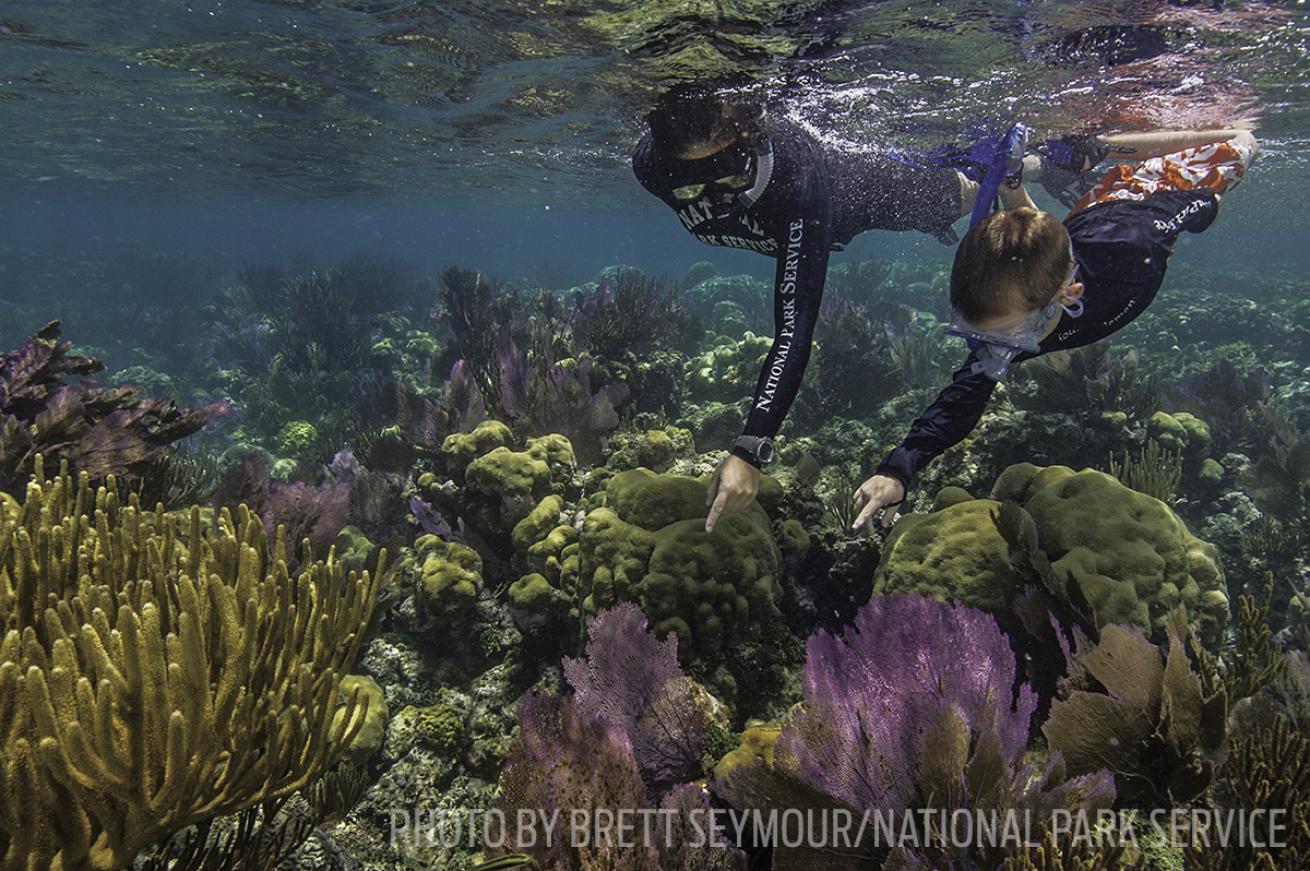
Brett Seymour/National Park ServiceSnorkeling in Dry Tortugas National Park
Dry Tortugas National Park Key West, Florida
“The dive sites in Dry Tortugas are by far the best coral-reef diving you can do in the continental United States,” says park manager Glenn Simpson. Of the 67,000 acres of coral reefs along the seabed of this protected area — located about 70 miles west of Key West — at least 10 species are endangered. Reef fish are bountiful, and you can see goliath grouper, dolphins and eels, as well as an American crocodile that hangs out near Garden Key. By hopping on a charter or personal boat, you can explore dozens of wrecks, including the Windjammer Wreck, where part of an 1875 sailing ship pokes out above the water.
> Average Viz: 100 feet in summer
> Average Temp: 80s to 90s
Cape Hatteras National Seashore Manteo, North Carolina
Earning the nickname “Graveyard of the Atlantic,” the Outer Banks of North Carolina is absolutely teeming with wrecks, so much so that a few, such as the Civil War-era Pocahontas, can be seen sticking out of the water. The confluence of currents from north and south brings creatures big and small, from tuna to shrimp. “Anything you’ll see in the Gulf of Mexico or the Caribbean, you have the chance to see on our shipwreck sites, because the same water that’s down there is up here three weeks later,” says Dave Sommers, owner of Dive Hatteras. But one of the biggest draws is sharks, of which Sommers has documented 12 species.
> Average Viz: 50 feet
> Average Temp: 60s to 70s
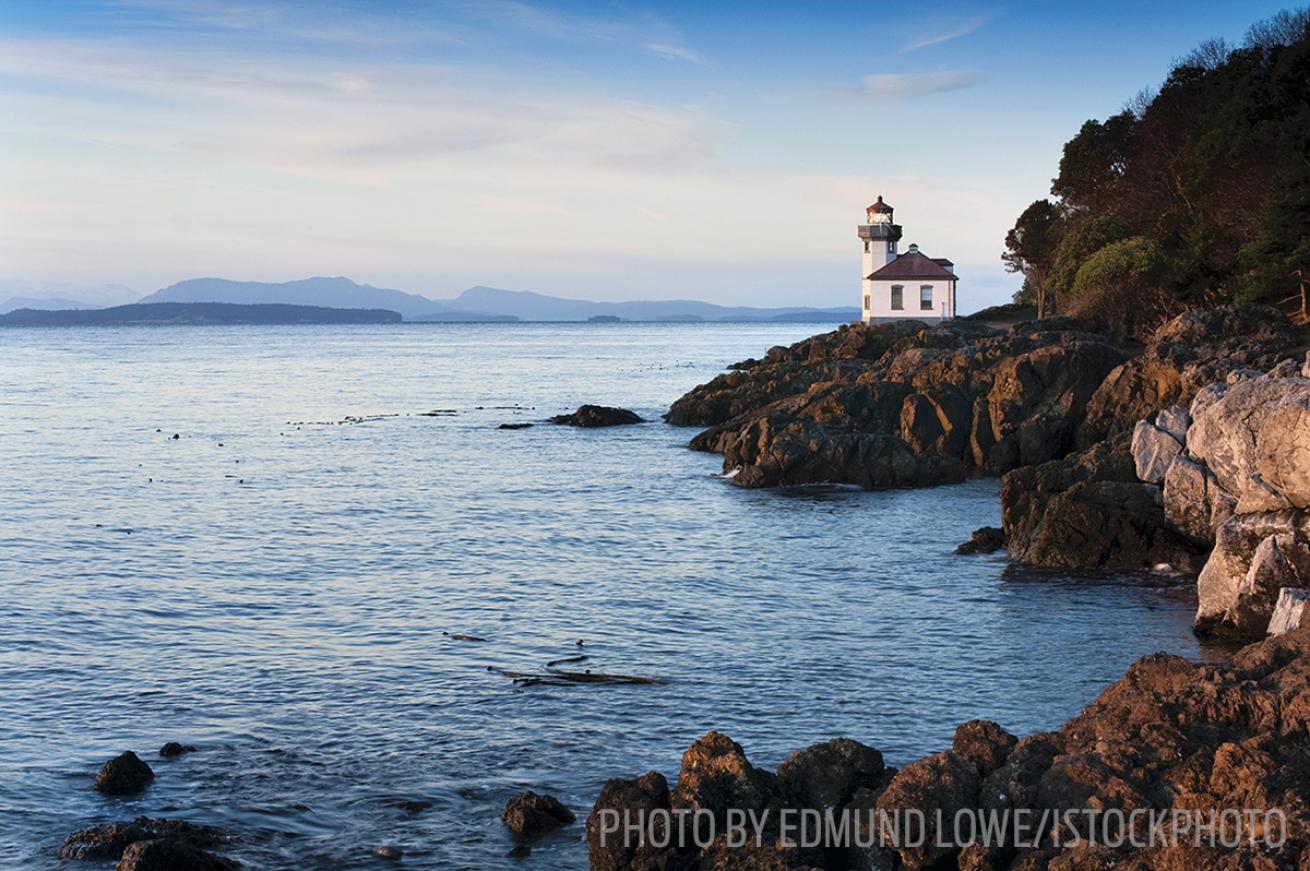
iStockphotoGive cold-water diving a try at San Juan Island National Historical Park in Washington
San Juan Island National Historical Park Friday Harbor, Washington
While colder waters are a significant characteristic of the Pacific Northwest, it doesn’t mean the biodiversity has to take a hit. Take a charter boat to dive on a slack tide, and wade through kelp forests to see nudibranchs, giant Pacific octopuses and wolf eels. “There is also a huge variety of sea stars, which provides vivid color to the underwater world if lit with a dive light or camera strobes,” says Seymour. And when the chill gets too deep, get back on land to see sea lions sunbathing on the beach, sea urchins resting in tidal pools, and orca whales softly spouting from the shore of American Camp.
> Average Viz: 20 to 30 feet
> Average Temp: High 50s to low 60s
Isle Royale National Park Lake Superior, Michigan
“The shipwrecks are what divers come to see,” says Steve Martin, west district ranger at this Michigan park. In Lake Superior, 10 shipwrecks — spanning more than 70 years of Great Lakes history — sit in their final resting places, waiting for divers to visit. Grab your drysuit and a dive permit from the front office and explore a local favorite, the SS America, whose depth starts at 2 feet and extends to 80 feet. “You can actually see the wreck itself,” says Martin. “It’s not covered by layers and layers of zebra mussels or quagga mussels obscuring the features.”
> Average Viz: 50 feet
> Average Temp: 60 degrees F

